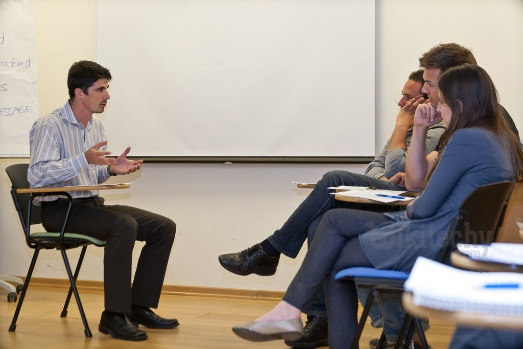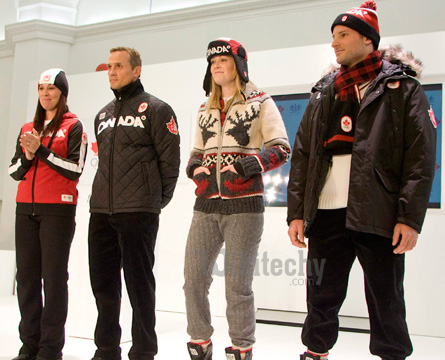
Canada Interview Outfits
Canada Details
- Canada people - Canadian
- Canada capital / capital of Canada - Ottawa
- Canada language - English, French
- Recognized regional languages - Chipewyan Cree Gwich’in Inuinnaqtun Inuktitut Inuvialuktun North Slavey South Slavey Tłı̨chǫ
- Canada population / population of Canada - 2016 census 35,151,728
- Canada currency - Canadian dollar ($) (CAD)
- When doing business in any of the larger cities, business suits and ties are standard attire for men with conservative suits and dresses for women.
- However, if doing business with smaller companies in more rural areas (or on the West Coast) do not be surprised to find a much more relaxed and casual approach to dress code. It is probably a good idea to do some research in this area before travelling to meet any new company or organisation.
- Take the weather conditions into account if travelling to Canada. Winters are, of course, very cold but summers can be hot and humid.
CANADIAN DRESS CODE FOR JOB INTERVIEWS
- In the job market, first impression carries weight. It is considered important to demonstrate at a job interview good appearance as well as good etiquette. Do your research. Know something about the company where you are interviewing. Find out what their employees wear and then dress as they are or nicer than that.
- Dress neatly and conservatively.
- Men wear suits and ties.

- Women wear conservative suits or dresses with simple accessories.
- Caps, bandannas, athletic shoes, sweats, unkempt clothes, jeans, singlets, open shoes and thongs are never acceptable. If the wind was blowing, comb your hair before making first contact at the reception. Do not carry a water bottle or coffee mug. Carry only a slim folder holding your job application documents and resumes. Do not chew anything.
CANADA BUSINESS DRESS CODE
A business formal dress code enhances the professional image of your workplace environment and your personal brand. This page provides style guidelines for on-campus activities where this dress code is required. The gallery and descriptions on this page help define “business formal.”
- The Look
- Clothing should be crisp, neat, pressed and never wrinkled, to project a professional, “business formal” image. Torn, dirty, and unmatched clothing is unacceptable.
- Attire
- The standard dress code in a business formal environment is a full matching business suit, including a jacket and dress pants or a dress skirt. The darker the suit, the more formal!
- For Men
- In addition to matching pants and jacket, men should wear a button-up collared shirt, paired with a tie. Refrain from wearing bold and bright colours or patterns in dress shirts; white, beige or light blue are “safe” colours for collared shirts. Choose a tie with colours and tones that match your suit and dress shirt; bolder colours and patterns are acceptable for ties. Some men choose to wear a three-piece suit, in which case the vest colour and material match the jacket and slacks.
- For Women
- A dress pant or skirt with matching jacket is considered business formal for women. Depending on the season, jackets may be ¾ length or short sleeve. A crop pant suit is also suitable, however the pant hem should hit mid-calf and this style is not recommended in an interview setting. Skirts should always sit at or just above the knee. A collared blouse or dress-material top is recommended, and should either be tucked in or fall just below your waistline. Tops should never hang below the hem of your suit jacket, or be so short that they show your stomach. Always be cautious that dress shirts are not too revealing in any business setting. Pantyhose are not required, however during the fall and winter seasons, darker pantyhose or tights are recommended when wearing skirts.
- Accessories
- Depending on the colour or tone of your suit, a black or brown belt should be worn. Coloured or white belts are not recommended. Never wear white socks with a suit. Dress socks should always be worn, preferably in a tone matching your suit and shoes. When in doubt, wear black dress socks. Optional accessories for men include cufflinks or a pocket-square. The material should match the tie. If desired, women may wear simple and tasteful jewellery; chunky and/or bright accessories are not recommended.

- Footwear
- Shoes, boots, flats, open-toed and closed-toed shoes in a leather or dress material are appropriate and should be clean and polished. to represent a natural look. Remember, some colleagues are allergic to the chemicals in perfumes and makeup, so wear these substances with restraint
- Religious and Health Accommodations
- Should a bona fide religious practice, belief or legitimate health need conflict with the dress code, reasonable accommodations will be made
- Jewelry, Makeup, Perfume, and Cologne
- These should be in good taste, with limited visible body piercing. Makeup should be used minimally
APPEARANCE IN CANADA
- Plan for a very cold climate, especially during their winter.
- Men should wear a dark conservative business suit with tie, especially in cities. Build a wardrobe based on classic lines (selecting suits with a traditional lapel width, and ties staying within a traditional width range). Conservative colors of navy and gray, and shirts in white and light blue
- Women should wear a conservative business suit or dress, especially in cities. Select your clothing with classic lines and colors in mind. Navy, gray, ivory, and white are the basics to work with. The major cities can be very sophisticated.
- New or trendy clothing is a poor choice. Older, classic clothing that is clean and neat is more valued. Choosing quality, natural fibers for your wardrobe will give you this look. Quality leather shoes are important to completing this look.
- Rural areas are less formal, but stay conservative in your wardrobe. Even with cold winter weather you may find yourself in a skirt or dress. Add a good quality long coat with minimal and classic detail to your wardrobe. In addition to navy and gray, a classic camel coat, or a lined Burberry may be a good addition. This will work for a sophisticated city meeting, or a more casual rural meeting.
- Casual attire is appropriate when you are not working. The weather and activity will dictate what you will be wearing. Build a casual wardrobe using the classic colors (camel is additional color for casual). You will look professional, even though relaxed.
- The "V for Victory" sign is an insult if your palm is facing yourself. If you must use this sign, face your palm outward.
TRADITIONAL CLOTHING OF CANADA
- The history of Canadian traditional costume (actually, many people think that there is no traditional garment in Canada, but still some pieces of clothing can be considered as their national dress) begins during the era of Native Indians. In 17th century the traditional dress begins to change fluently into more European one. Why?
- One of the most important things for the Native Indians in Canada was to keep the tradition in everything. Every tribe had its traditional garment, jewelry and style of face painting. Tribes lived far from each other and didn't contact often. So, every tribe managed to keep its own dress untouched and unchanged for centuries.
- But after colonizers came to Canada Native Indian tribes lost some of their territories. They were forced to live closer to each other. So, they began to borrow each other's tribal dress. In that period the most popular clothing among Indians were feather headdresses, fringed buckskin clothing, and woven blankets.
- In 19th century Native Indians were wearing beaded jackets and shirts, woolen sweaters, Seminole patchwork skirts, ribbon shirts, satin shawls, jingle dresses, broad ribbon applique, and the Cherokee tear dress.
- New settlers from Europe brought new fashion to Canadian lands. And this fact changed the whole clothing tradition in this country forever.
- Famous dresses list in Canada
- summer dresses canada
- bridesmaid dresses canada
- party dresses canada
- white dress canada
- cocktail dresses canada
- red dress canada
- long dresses canada
- formal dresses canada
- cheap dresses canada
- evening dresses canada
- lace dress canada
- sundresses canada
- holiday dresses canada
- grad dresses canada
- floral dresses canada
- evening gowns canada
- black dress canada
- denim dress canada
- summer maxi dresses canada
- wrap dress canada
- sweater dress canada
- purple dress canada
- gowns canada
- yellow dress canada
- bodycon dress canada
- black maxi dress canada
- summer clothes canada
- gold dress canada
- petite dresses canada
- green dress canada
- womens summer dresses canada
- midi dress canada
- bridesmaid dresses online canada
- party dresses online canada
- white lace dress canada
- casual dresses canada
- halter dress canada
- sequin dress canada
- short dresses canada
- long summer dresses canada
- special occasion dresses canada
- navy blue dress canada
- black lace dress canada
- shop dresses canada
- fancy dresses canada
- blue dresses canada
- womens cocktail dresses canada
- spring dresses canada
- bridesmaid dresses canada online
- little black dress canada
- long sleeve dresses canada
- fit and flare dress canada
- long sleeve maxi dress canada
- pink dress canada
- christmas dresses canada
Men's clothing from ancient times till today
- Dress of Native Indians
- Mostly the Natives wore (and they still do) trousers with a kind of skirt onto them. It was the most popular clothing of Native Indians: the breech clout or breech cloths – rectangular piece of cloth or leather which was belted and worn with leather leggings (or without it). Some tribes wore kilts and fur trousers.
- Canadian Native Indians mostly didn't wear shirts in summer. They used leather shirts for cold season. Their clothes were very natural (made of natural materials and painted in natural colors) and beautiful, with quillwork, beadwork, feather elements and decorations made of wood and bone. Also clothing of Native Indians was often painted in different colors, just like their skin.
- But the most unusual and distinctive piece of clothing of Native Indians was the headdress. Usually it was made of feathers and was very large and bright. And almost every tribe had its own traditional type of headgear and formal clothing.
- Shoes of Native Canadians were made of leather as well as clothes. They wore moccasins, which were comfortable, soft and silent when walking – necessary features for a hunter. There also were mukluks (heavier boots).
- Women's clothing from ancient times till today Dress of Native Indians
- The Native Canadian women mostly wore shirts, skirts and leggings, but the design, material and decorations were different from tribe to tribe. In some tribes shirts were optional and were used only as a coat. Other women always wore shirts, tunics or mantles in public. There were also American Indian dresses, which replaced shirts, skirts and leggings in some Indian tribes in Canada.
- Native Indian women wore same shoes as man: moccasins or mukluks.
- Garments of colonial period
- In 17th-19th century women in Canada wore separate tops and skirts. Also they wore corset bodices (they were waist-long and sleeveless), chemises (knee-length undergarments which could function for the working classes as blouses), petticoats (skirts), aprons and caps. Similar clothing was warn in Europe in the same period, especially in France, England and Spain.
- But garments in Canada depended much on the weather conditions and the way of life in this part of the world. For example, women couldn't wear shoes made for English roads in Canada. They preferred flexible leather moccasins, which were much more comfortable, warm and appropriate. Still new Canadian settlers tried hard to follow the European fashion. They ordered clothes and fashion magazines, shared every new information about fashion and style etc.
- Present-day clothing
- Actually, Canadians don't have general national costume, because the population of this country was formed by a mix of nations: Native Indians, Frenchmen, Englishmen and others. But there are some pieces of clothing that are typical for present-day Canadians. Fashion in Canada today still depends much on the weather and climate conditions.

- That's why people wear parkas, long john's (an undergarment, basically long underwear), ear muffs, scarves, gloves, mittens, tuques (woolen caps), various jackets made of linen and leather, leggings, ojibwa shirts, trousers, and moccasins. Apart from this, variety of dresses are real famous in canda such as sexy evening dresses,fashion dresses,coast dresses,sexy summer dresses,casual dresses,,monsoon dresses,,winter dresses,night dress,wedding dresses,party dresses,semi formal dresses,little black dress,sexy cocktail dresses,red cocktail dress,floral dresses,purple cocktail dresses,bridesmaid dresses,white summer dress,maxi dresses. These are unisex clothes, good for both men and women.
